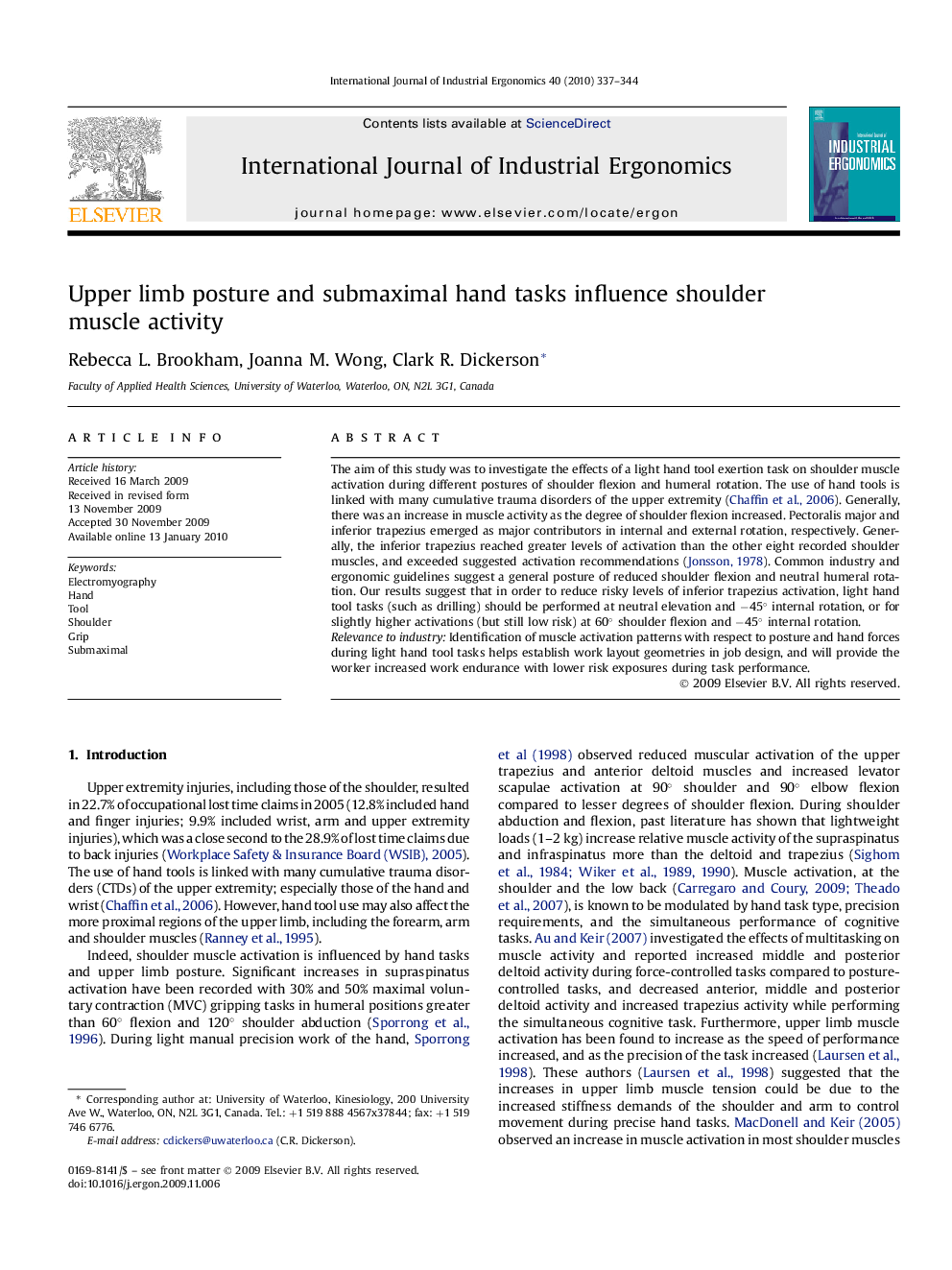| Article ID | Journal | Published Year | Pages | File Type |
|---|---|---|---|---|
| 1096438 | International Journal of Industrial Ergonomics | 2010 | 8 Pages |
The aim of this study was to investigate the effects of a light hand tool exertion task on shoulder muscle activation during different postures of shoulder flexion and humeral rotation. The use of hand tools is linked with many cumulative trauma disorders of the upper extremity (Chaffin et al., 2006). Generally, there was an increase in muscle activity as the degree of shoulder flexion increased. Pectoralis major and inferior trapezius emerged as major contributors in internal and external rotation, respectively. Generally, the inferior trapezius reached greater levels of activation than the other eight recorded shoulder muscles, and exceeded suggested activation recommendations (Jonsson, 1978). Common industry and ergonomic guidelines suggest a general posture of reduced shoulder flexion and neutral humeral rotation. Our results suggest that in order to reduce risky levels of inferior trapezius activation, light hand tool tasks (such as drilling) should be performed at neutral elevation and −45° internal rotation, or for slightly higher activations (but still low risk) at 60° shoulder flexion and −45° internal rotation.Relevance to industryIdentification of muscle activation patterns with respect to posture and hand forces during light hand tool tasks helps establish work layout geometries in job design, and will provide the worker increased work endurance with lower risk exposures during task performance.
